Conservation Science
Protecting Pennsylvania’s Plants and Animals
Climate Change
Climate change is a problem of global proportion and its impacts have begun to alter the world as we know it. For thousands of years Earth’s climate has been relatively stable. Since the retreat of the last continental glaciers, life on Earth has become accustomed to a consistent range and variation of temperature, precipitation, sea level and polar ice patterns. Over centuries, very slow changes in weather patterns have allowed species to adapt and move over many generations. However, with more rapid changes in temperature, precipitation and severity of weather events, species will be challenged to adapt over decades and not centuries.
Climate Change Webinar
Conservation in a Changing Climate
The impacts of our changing climate become more apparent with every season. How is climate change affecting Pennsylvania’s species and how are conservationists reacting in order to increase survival chances for the most vulnerable species and habitats? On Oct. 22, 2020, Charles Bier, the Western Pennsylvania Conservancy’s senior director of conservation science, gave a free talk about climate change and how it’s altering the environment and the habitats of our region’s plant and animal species.
For decades, Charles has studied the changing climate. In this webinar, he shares his expertise, explores some of the patterns that are continuing to emerge due to climate change, and discusses how the Conservancy is addressing these conditions through conservation science, land protection and water conservation work.
WPC’s Climate Change Research
In Pennsylvania, climate change-related effects, warmer temperatures, changes in precipitation patterns, more frequent and intense storms, extended heat waves and longer droughts will likely affect the plants, animals and landscape of our state.
Scientists with the Pennsylvania Natural Heritage Program, a collaborative partnership in which WPC is the managing partner that helps guide conservation decisions, are using their knowledge of our state’s natural resources to begin to understand and identify climate change impacts on native plants and animals, and prepare for these impacts and respond to them. Part of this work includes identifying climate change vulnerable species and monitoring their habitats.
PNHP data has been used to guide biodiversity conservation and land protection consideration across the state since 1981. Learn and read more about climate change in a recent newsletter from our PNHP scientists and researchers.
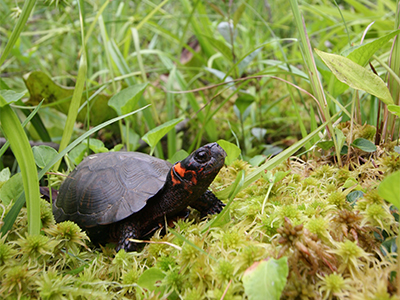 Climate change will likely alter the distribution and abundance of plant and animal species in Pennsylvania. Some species will respond differently than others based on their biological needs, range and how dependent they are on factors affected by climate change. In Pennsylvania, we will likely have "winners," species that expand their range, and "losers," those species whose ranges become smaller and may even be lost from the state. We may even gain species, as those currently limited to the south expand their ranges northward. Recognizing which species are more vulnerable to climate change and potential responses are important first steps in preparing for future conservation efforts.
Climate change will likely alter the distribution and abundance of plant and animal species in Pennsylvania. Some species will respond differently than others based on their biological needs, range and how dependent they are on factors affected by climate change. In Pennsylvania, we will likely have "winners," species that expand their range, and "losers," those species whose ranges become smaller and may even be lost from the state. We may even gain species, as those currently limited to the south expand their ranges northward. Recognizing which species are more vulnerable to climate change and potential responses are important first steps in preparing for future conservation efforts.
PNHP biologists have been using a climate change vulnerability index (CCVI) developed by NatureServe to begin to understand which species in Pennsylvania are more vulnerable to climate change. We found that plants and animals with more limited dispersal and specialized habitat requirements are more vulnerable to climate change than those species that can move long distances and can be found in a variety of habitats.
The results of this project and other climate change assessments provide guidelines for updating species conservation plans and designing monitoring programs. Recognizing which species are vulnerable and the risk factors associated with vulnerability are necessary for adaptive planning.
Peatlands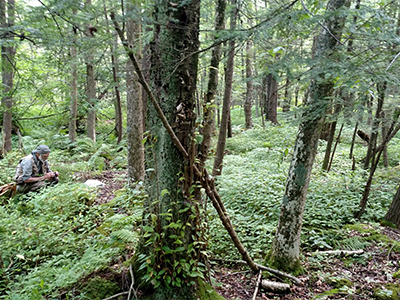 represent a unique group of wetlands in Pennsylvania. They are characterized as having a significant accumulation of water-logged peat. While these ecosystems occur in many regions across the globe, they are most common in cooler environments, such as at higher elevations and higher latitudes. In Pennsylvania, peatlands are found in the glaciated regions of the state and at high elevations in the mountains.
represent a unique group of wetlands in Pennsylvania. They are characterized as having a significant accumulation of water-logged peat. While these ecosystems occur in many regions across the globe, they are most common in cooler environments, such as at higher elevations and higher latitudes. In Pennsylvania, peatlands are found in the glaciated regions of the state and at high elevations in the mountains.
The cooler climate at high elevations provides a more boreal environment for plants and plant communities ordinarily found farther north in the United States. Many of these species are listed as rare, threatened or endangered in the state. Because of their specific temperature and water needs, peatlands will likely change in the future. The effects of climate change, such as rising temperatures and alterations in the hydrological cycle, may alter the environmental conditions that support these specialized vegetation assemblages.
To begin to understand the effects of climate change on peatlands, biologists with the Pennsylvania Natural Heritage Program have established a long-term monitoring program at 30 sites to follow target plants and plant communities to see how they change over time. We are interested in changes in plant community structure and composition, shifts in plant communities within sites, and whether some of the rarer species populations decline and what replaces them.
In addition to plants and plant communities, PNHP biologists are also interested in how other things that use peatlands will respond due to climate change. Right now, we are looking at what common bird species and insects use peatlands. Will the common species of today become less common in the future if the habitat changes? Only time will tell.
Species distribute themselves across the landscape opportunistically. They thrive where temperature, light, moisture, competition, food and other resources offer the right environment. Some species can range broadly across much of North America, while others have much more limited distribution. Pennsylvania is in a curious spot where many northern species reach their southern limit and where many southern species meet their northern limit. Although less definitive, the same is true for western and eastern-tending species as Pennsylvania picks up some species of the plains and prairie as well as those of the coastal plain.
We are interested in species populations that represent a limit or edge of their range. It has been demonstrated that the edge populations of some species are unique genetically. Adaptation to conditions different from those at the center of their range leads to physiognomic, behavioral and eventually genetic changes. Overall, this can be an advantage to a species, giving it a greater ability to adapt to climate change and environmental change, in general.
PNHP has been considering a number of edge-of-range species that are species of special concern in Pennsylvania. Our goal is to evaluate these species and their habitats, search for additional habitat and populations, and provide conservation recommendations for specific sites and populations. We are using a technique to predict appropriate habitat called climate envelope modeling.
Climate envelope models use GIS data representing geology and current and potential future climates, examining how changes in climate may affect where a given species might be able to persist in the future. The modeling process identifies new places for us to survey and gives us an indication of how widespread or confined potential habitat is for a species. By using this information when considering what the effects of rising temperatures or changes in moisture and precipitation might be, we can get an idea of how hard it may be for a species to successfully adapt and move into new areas.
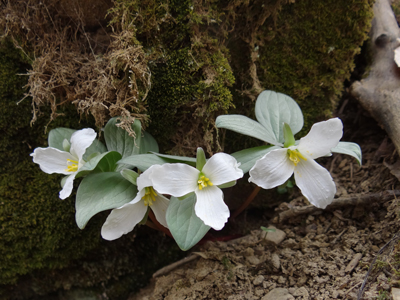
Snow trillium
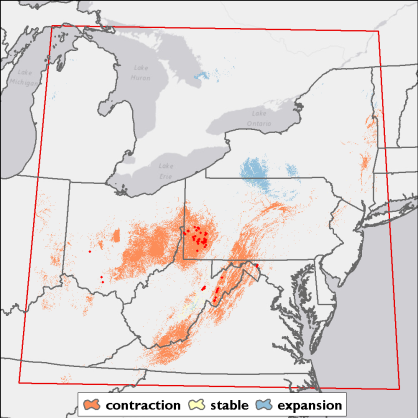
This map shows the potential range shift of snow trillium under future climate scenarios (2060). Much of the suitable area in Pennsylvania for snow trillium may disappear.
Land Protection Planning in a Changing Climate
A World with a Changing Climate
For thousands of years earth’s climate has been relatively stable. Since the retreat of the last continental glaciers, life on earth has become accustom to a consistent range and variation of temperature, precipitation, sea level and polar ice patterns. Global climate and regional weather patterns have supported the life-sustaining characteristics of a wide diversity of habitats upon which species have evolved to depend upon. 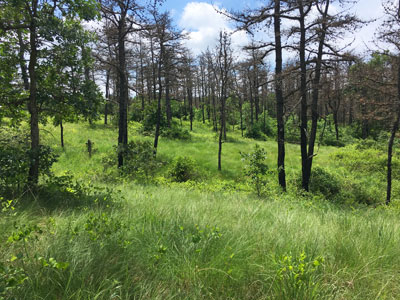
The resulting patterns of the distribution of plants and animals on the face of the earth are a result of their adaptation to relatively stable regional climatic conditions. Indeed, climate shifts have occurred in the past, but when species have had to face climatic shifts these alterations occurred over very long periods of time, e.g. tens of thousands of years.
Beginning a mere century or so ago, the stability of earth’s climate began to change due to modern human activities that are resulting in alterations to the makeup of the global atmosphere. A wealth of scientific information describing the factors and processes of climate change has become widely available, as have predictions regarding the ways and extents to which the climate is changing. Many of these changes have significant implications for conservation organizations attempting to protect and manage the rich array of plants, animals and habitats that are part of our natural heritage.
The Conservancy is developing a set of climate change strategies to incorporate within the internal process of selecting, protecting and managing important tracts of land that encompass or support the entire portfolio of biodiversity targets (habitats and species). The impacts of climate change on natural resource conservation and human health are going to be around for a long time and attention to these issues will be increasing in terms of real challenges on the ground and in terms of the interest of funders to support conservation work at several levels. There are numerous options to consider now, regarding conservation and climate change issues; however, even though there is a large body of scientific information building, the resulting recommendations are still evolving and conservation planning will continue to evolve over time.
A set of guiding principles for addressing climate change as land protection and management continues includes both modified existing conservation practices and new concepts. Both of these approaches will attempt to create conservation sites that are more suited to retain their qualities while facing the increased physical and ecological stress that accompany experienced and anticipated influences of climate change, including:
- More extreme precipitation events in amount and severity, and flashy storm events provide less opportunity for rain percolation to groundwater
- Less even rain and snowfall during the year, with potentially drier summers and wetter winters
- Longer and more drastic droughts
- Resulting extremes of high energy flashy floods and low, warmer and lower dissolved oxygen streams
- Conditions, in particular those related to increasing temperature, and inconsistent temperature regimes, will create climates that are suitable for species in their present ranges, and species will attempt to shift ranges (terrestrial, aquatic, etc.)
- Species emigration to more suitable environments could be prevented by inadequate or absent corridors, and hindered by the rapidity of changing conditions beyond the capacity of species to shift
- Potential growing mismatches in species phenologies, e.g. spring migrant birds now arriving later than when there is peak availability of insect populations (food)
- Increased habitat suitability for certain invasive species and new invasives adapted to the changing environment, resulting in greater pressure on native species and ecological attributes
- Degradation in landscape condition and context will make it more challenging for species and ecological functions to contend with, e.g. gaps or barriers in aquatic or terrestrial dispersal corridors, and the decreased viability of smaller patch sizes for habitats
WPC has modified guidelines identified by Schmitz et al. (2015) regarding strategies for the conservation of species, habitats and ecosystems:
- Protect current patterns of biodiversity
- Protect large, intact, natural landscapes
- Protect the geophysical settings
- Assess the resiliency of each site within a geophysical setting context
- Maintain and restore ecological connectivity
- Identify and appropriately manage areas that will provide future climate space for species expected to be displaced by climate change
Climate change is but one more set of anthropogenic stresses on our conservation targets, albeit this one is pervasive and likely an issue for every conservation project. Historically in our work there are a set of stresses that we have tried to plan to address, and to protect against, or to mitigate. There are basic conservation biology principles that maintain or restore the ecological / environmental health of conservation targets, e.g. size, buffer zones, etc., and many of these principles are still important in guiding conservation strategies and activities in a climate changing world, but probably need to be expanded, including:
• Prioritize work via WPC's conservation blueprint and develop comprehensive portfolios and redundancy in each conservation region
• Pay attention to and prioritize on key ecological attributes (how species and habitats function, e.g. pollination) that are at risk from climate change, e.g. stream temperature that can be improved by increasing protected forested buffers
• Improve the landscape context of conservation sites (buffer core habitats with non-detrimental land use)
• Avoid and repair fragmentation; by choosing less fragmented landscapes when all else is equal and by restoring those areas that are otherwise important as cores or buffers
• Bigger is better - larger areas of protected habitats are more resilient
• Bigger also refers to buffer zones around key sensitive habitats
• Provide aquatic or terrestrial connections at various scales, and continue projects such as reforestation of corridors and stream culvert improvements
• Keep cold water cold – with wider buffers and more forested watersheds
As landscapes become altered by climate change, two additional novel concepts are driving today’s protection planning: (1) protection of the most important future habitats within all geophysical settings for a wide variety of species, and (2) protection of resilient sites within the most important geophysical settings.
WPC staff and other partners believe that the emerging geophysical setting approach (refined at the local scale to Ecological Landscape Units) is an important foundation for future land protection and related conservation activities. Therefore, some new ideas for conservation in response to climate change arise.
a) Thinking broadly, WPC should reduce attention to specific occurrences of species and natural communities and more attention to abiotic settings = geophysical settings
b) WPC should focus more on protecting diverse terrains, ecological units and habitat types (elevation gradients, variety of aspects, mixed and the most important geologies). This is desirable at multiple scales, including for:
• Regional conservation planning - Mid-Atlantic: now elevated in importance
• Landscape planning
• Individual site plans and stewardship plans for individual tracts
• Also: Protect rare habitat types, but do not expect these to remain as the same natural communities over time
c) Protect calcareous and other non-acidic soil and bedrock landscapes in diverse low elevation areas for range expansion of southern species, and as unusual and under-protected ecosystems of globally rare species (conserving the richest settings)
d) Assess potential protection sites in terms of resiliency, based on geophysical setting type.
e) Focus protection efforts over time to build portfolios of larger habitats in discrete areas with replicated units all within the context of a functional matrix landscape. This will provide more overall ecological and genetic capacity through redundancy within supporting surroundings.
• Where unique situations do identify a particular species, consider the potential for target species to shift and leave the site presently focused on, and for the necessity to protect other a future locations.
• Layers of geographic/environmental information are needed to show important areas for shifting biodiversity. This would not necessarily be part of the WPC Blueprint, but could be superimposed in order to provide insight.
• Conventional stresses will now be amplified and will have to be more aggressively and thoroughly addressed, e.g. some invasive species will benefit and will further invade stressed ecosystems; e.g. the influence of fragmentation (microclimate, dispersal problems) will be further heightened; watershed recharge zones might become more important. This might be addressed by multiple programs within WPC, including the land stewardship and watershed programs.
Anderson MG, Ferree CE. 2010. Conserving the Stage: Climate Change and the Geophysical Underpinnings of Species Diversity. PLoS ONE 5(7): e11554. doc10.1371/journal.pone.0011554
Ruddock K, August PV, Damon C, LaBash C, Rubinoff P, Robadue D (2013) Conservation in the Context of Climate Change: Practical Guidelines for Land Protection at Local Scales. PLoS ONE 8(11): e80874. doi:10.1371/journal.pone.0080874
Oswald J. Schmitz, Joshua J. Lawler, Paul Beier, Craig Groves, Gary Knight, Douglas A. Boyce Jr., Jason Bulluck, Kevin M. Johnston, Mary L. Klein, Kit Muller, D. John Pierce, William R. Singleton, James R. Strittholt, David M. Theobald, Stephen C. Trombulak and Anne Trainor. 2015. Conserving Biodiversity: Practical Guidance about Climate Change Adaptation Approaches in Support of Land-use Planning. Natural Areas Journal, 35(1):190-203.
Pennsylvania Department of Conservation and Natural Resources. 2015. DCNR and Climate Change, Planning for the Future. 20pp.
Shortle, J. et al. May 2015. Pennsylvania Climate Impacts Assessment Update.
Learn the Science of Climate Change
A wealth of scientific information describing the factors and processes of climate change is widely available, as are predictions regarding the ways and extents to which the climate is changing. The science of climate change has grown and now includes substantial literature and studies.
Check out the following resources for more information about the science of climate change:
What We Can Do
Climate Change-Evidence, Impact and Choices (National Research Council)
Climate Kids (National Aeronautics and Space Administration)
Top 10 Ways You Can Stop Climate Change (One Nature-David Suzuki Foundation)
30 Easy Ways to Stop Global Warming (Earth Eclipse)
35 Excellent Tips for Going Green in the Workplace (Cultivating Capital)
Greening the Workplace (American Federation of State, County and Municipal Employees)
For More Information:
Western Pennsylvania Conservancy
800 Waterfront Drive
Pittsburgh, PA 15222
